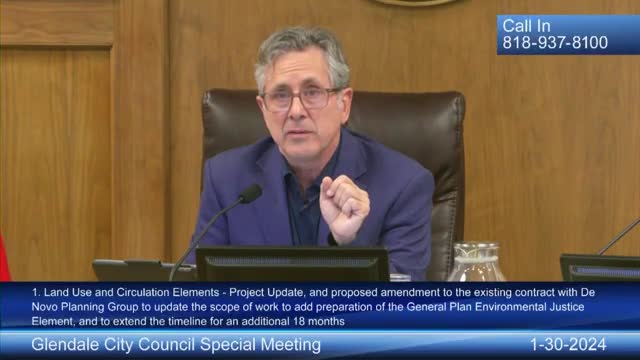Glendale Council Reviews CalEnviroScreen for Environmental Justice and Land Use Changes
September 26, 2025 | Glendale, Los Angeles County, California
This article was created by AI summarizing key points discussed. AI makes mistakes, so for full details and context, please refer to the video of the full meeting. Please report any errors so we can fix them. Report an error »

In a recent Glendale City Council meeting, city officials gathered to discuss pressing issues surrounding environmental justice and land use, setting the stage for significant changes in the community. The atmosphere was charged with anticipation as council members explored the implications of new guidance from the California Attorney General regarding the identification of disadvantaged communities.
The discussion centered on the CalEnviroScreen, a tool traditionally used to map areas in need of environmental support. However, the Attorney General's recent directive emphasizes that this method alone may not capture all communities requiring assistance. Council members expressed a commitment to broaden their analysis, ensuring that additional areas facing unique environmental burdens are included in future planning efforts.
As the meeting progressed, the conversation shifted to the upcoming Environmental Impact Report (EIR). City officials announced plans to circulate a draft by the end of the year, with public comments expected to close in early 2025. This report will be crucial in assessing the environmental implications of proposed developments and land use changes.
Council members also took the opportunity to voice suggestions for improving land use strategies. One member highlighted the need to revitalize Brand Boulevard, advocating for a shift away from professional services that create "dead zones" in the downtown area. Instead, they envisioned a vibrant space filled with food, entertainment, and arts, fostering a more engaging community atmosphere.
Another council member raised concerns about outdated zoning regulations that hinder opportunities for activities like horse lessons in certain neighborhoods. This call for modernization reflects a broader desire to adapt land use policies to better serve the community's evolving needs.
The meeting also touched on transportation and housing issues, with discussions about moving away from traditional grading systems for traffic analysis and exploring innovative housing types that bridge the gap between single-family homes and larger multifamily buildings. Suggestions included relaxing open space requirements and reconsidering impact fees to encourage smaller housing units.
As the council members wrapped up their discussions, it was clear that Glendale is on the brink of transformative changes. With a focus on inclusivity and sustainability, the city aims to create a more equitable environment for all residents. The upcoming months will be pivotal as the council continues to refine its strategies and engage the community in shaping a brighter future for Glendale.
The discussion centered on the CalEnviroScreen, a tool traditionally used to map areas in need of environmental support. However, the Attorney General's recent directive emphasizes that this method alone may not capture all communities requiring assistance. Council members expressed a commitment to broaden their analysis, ensuring that additional areas facing unique environmental burdens are included in future planning efforts.
As the meeting progressed, the conversation shifted to the upcoming Environmental Impact Report (EIR). City officials announced plans to circulate a draft by the end of the year, with public comments expected to close in early 2025. This report will be crucial in assessing the environmental implications of proposed developments and land use changes.
Council members also took the opportunity to voice suggestions for improving land use strategies. One member highlighted the need to revitalize Brand Boulevard, advocating for a shift away from professional services that create "dead zones" in the downtown area. Instead, they envisioned a vibrant space filled with food, entertainment, and arts, fostering a more engaging community atmosphere.
Another council member raised concerns about outdated zoning regulations that hinder opportunities for activities like horse lessons in certain neighborhoods. This call for modernization reflects a broader desire to adapt land use policies to better serve the community's evolving needs.
The meeting also touched on transportation and housing issues, with discussions about moving away from traditional grading systems for traffic analysis and exploring innovative housing types that bridge the gap between single-family homes and larger multifamily buildings. Suggestions included relaxing open space requirements and reconsidering impact fees to encourage smaller housing units.
As the council members wrapped up their discussions, it was clear that Glendale is on the brink of transformative changes. With a focus on inclusivity and sustainability, the city aims to create a more equitable environment for all residents. The upcoming months will be pivotal as the council continues to refine its strategies and engage the community in shaping a brighter future for Glendale.
View full meeting
This article is based on a recent meeting—watch the full video and explore the complete transcript for deeper insights into the discussion.
View full meeting
